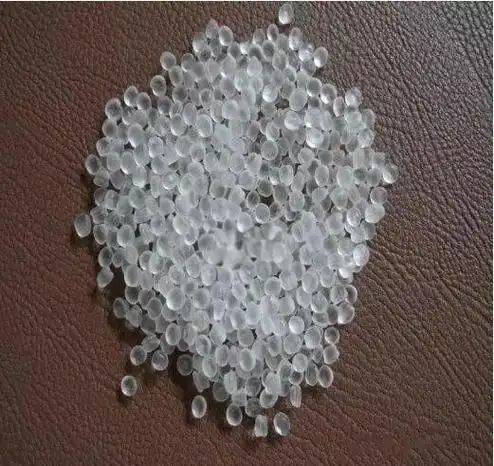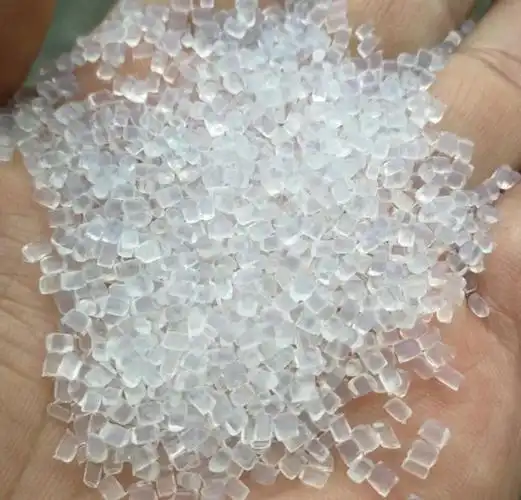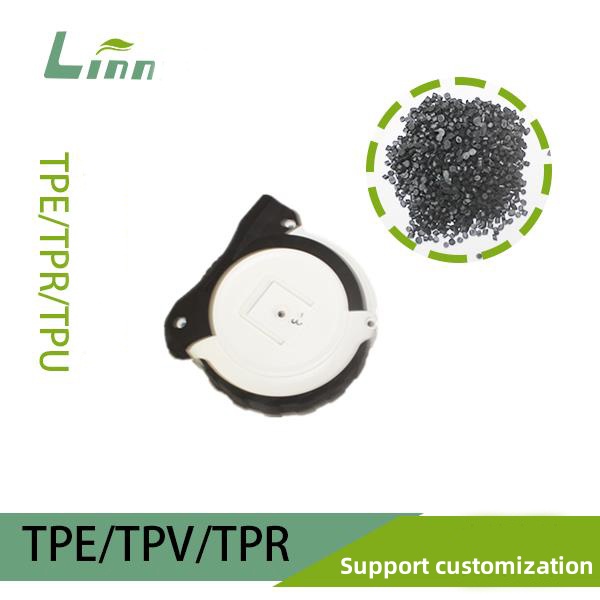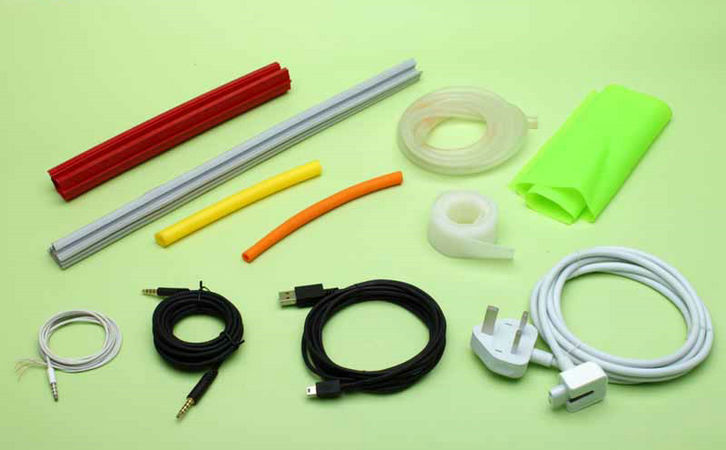Picture this: you’re standing by a TPE cast film extrusion line, the hum of the machine filling the air, the glossy film rolling out, shimmering under the factory lights. Everything seems perfect—until you measure the film and notice the center is stubbornly thicker than the edges. It’s like baking a cake that puffs up too much in the middle, throwing off the whole recipe. As someone who’s spent years tweaking extrusion lines and wrestling with TPE (thermoplastic elastomer) quirks, I’ve seen this issue pop up more times than I can count. It’s frustrating, sure, but it’s also fixable. Let’s dive into why the center of your TPE film is too thick and how you can smooth things out, with practical tips, a dash of insider know-how, and a few lessons learned the hard way.

Why Does the Center Get Too Thick?
The TPE cast film extrusion process is a delicate dance of heat, pressure, and flow. When the film comes out thicker in the center, it’s usually a sign that something’s disrupting the balance. Think of the die head as the conductor of this orchestra—if it’s not tuned just right, the melody falls apart. The thickness issue often stems from uneven melt flow across the die, where more material piles up in the center, creating a pesky bulge. But what causes this? Let’s break it down.
Die Design and Flow Distribution: The die head is supposed to spread the molten TPE evenly, but a poorly designed or worn die can channel more material to the center. This is especially common in coathanger dies, where the geometry might not match the TPE’s flow properties.
Melt Viscosity Issues: TPE is a finicky beast—its viscosity changes with temperature and shear rate. If the melt isn’t uniform, the center might flow faster or slower, piling up material.
Temperature Variations: Uneven heating across the die or barrel can make the TPE behave differently at the center versus the edges, affecting thickness.
Chill Roll Dynamics: The chill roll pulls the film and cools it, but if the pull rate or cooling isn’t consistent, the center can stretch or contract unevenly.
Material Properties: TPE blends vary—some have fillers or additives that mess with flow, leading to uneven thickness.
I’ve stood by countless extrusion lines, squinting at films that looked perfect from afar but betrayed their flaws under a caliper. The center thickness issue is a classic—it’s not just a machine problem; it’s a puzzle that demands you understand your TPE, your equipment, and how they talk to each other.
Practical Solutions to Even Out TPE Film Thickness
Fixing a thick center isn’t about throwing darts at a board—it’s about methodically checking each piece of the puzzle. Below, I’ll walk you through the most effective ways to tackle this issue, drawing from years of tweaking machines and a few late-night troubleshooting sessions.
1. Optimize Die Head Settings
The die head is the heart of the extrusion process, and if it’s not set up right, you’re fighting an uphill battle. A thick center often means the die isn’t distributing the melt evenly.
Adjust Die Gap: Check the die lip gap. If it’s too wide in the center, more TPE flows there. Use a feeler gauge to measure the gap across the die and adjust the bolts to narrow it slightly in the center. Aim for a gap variation of less than 0.02 mm for precision.
Inspect Die Condition: A worn or dirty die can disrupt flow. Look for scratches, residue, or polymer buildup inside the die. I once found a die clogged with degraded TPE—a quick clean with a wire brush and solvent fixed the issue.
Use a Restrictor Bar: Some dies have adjustable restrictor bars or choker bars to fine-tune flow. Tighten the bar slightly in the center to reduce material flow there.
Pro Tip: Always make small adjustments and measure the film thickness after each tweak. It’s like tuning a guitar—one big twist can throw everything off.

2. Balance Melt Temperature
TPE is sensitive to temperature, and even a few degrees can change how it flows. If the center is too thick, the melt might be too hot or too cold in certain zones.
Check Barrel and Die Temperatures: Use a thermal camera or probe to map the temperature across the die head and extruder barrel. TPE typically processes at 180–220°C, but check your specific grade’s datasheet. If the center is hotter, reduce the die’s center zone temperature by 5–10°C.
Ensure Uniform Heating: Faulty heaters or thermocouples can create hot or cold spots. I once traced a thickness issue to a burned-out heater in the die’s center zone—replacing it was a game-changer.
Adjust Screw Speed: A faster screw can increase shear, lowering viscosity in the center. Slow it down slightly to balance the flow.
I remember a factory run where we spent hours chasing a thick center, only to realize the die’s center heater was stuck at 230°C, making the TPE flow like syrup. A quick recalibration brought the film back to spec.
3. Fine-Tune Chill Roll Settings
The chill roll is where the molten TPE turns into a solid film, and its settings can make or break thickness uniformity.
Adjust Roll Speed: If the chill roll pulls too fast, the center stretches less than the edges, causing a thicker middle. Slow the roll speed slightly (e.g., 5–10%) and check the results.
Check Roll Alignment: A misaligned chill roll can pull unevenly. Use a level to ensure the roll is perfectly parallel to the die. Misalignment by even a fraction of a degree can cause trouble.
Optimize Cooling: Uneven cooling can lock in thickness variations. Ensure the chill roll’s water circulation is consistent—clogged channels can create warm spots that affect the center.
One time, I watched an operator crank up the chill roll speed to boost output, only to get a wavy, thick-centered film. Dialing it back and checking the cooling system saved the day.
4. Tweak Material Formulation
Sometimes, the TPE itself is the culprit. Its flow properties—driven by molecular weight, additives, or blend composition—can lead to uneven thickness.
Check Melt Flow Index (MFI): A TPE with a low MFI (indicating higher viscosity) might pool in the center. If possible, switch to a higher-MFI grade for better flow.
Reduce Fillers: Fillers like calcium carbonate can increase viscosity unpredictably. Consult your supplier to adjust the formulation for smoother flow.
Blend Consistency: Ensure the TPE pellets are uniform. I’ve seen batches where inconsistent blending caused flow variations, leading to a thick center.
A client once called me in a panic about a thick-centered film. After hours of machine tweaks, we tested the TPE and found the supplier had sent a batch with 10% more filler than usual. Switching to a consistent batch fixed it instantly.
5. Upgrade Die Design
If you’re fighting the same issue repeatedly, the die head itself might be the problem. Not all dies are created equal, especially for TPE’s unique flow behavior.
Switch to a T-Die: If you’re using a coathanger die, consider a T-die for better flow distribution, especially for wide films.
Add a Flex-Lip Die: Modern dies with adjustable flex lips allow real-time tweaking of the gap, giving you more control over thickness.
Consult a Die Specialist: If your budget allows, work with a die manufacturer to customize the internal geometry for your TPE grade.
I once advised a factory to invest in a flex-lip die after months of thickness issues. The upfront cost stung, but it paid off in consistent films and fewer headaches.

Comparison of Solutions
To help you choose the right fix, here’s a table summarizing the main approaches:
|
Solution |
Key Action |
Complexity |
Cost |
Effectiveness |
|---|---|---|---|---|
|
Die Head Adjustment |
Tweak gap, clean die |
Low–Medium |
Low |
High |
|
Temperature Control |
Adjust barrel/die temps |
Medium |
Low–Medium |
Medium–High |
|
Chill Roll Tuning |
Modify speed, cooling |
Low–Medium |
Low |
Medium |
|
Material Adjustment |
Change TPE formulation |
Medium–High |
Medium–High |
High |
|
Die Design Upgrade |
Use T-die or flex-lip die |
High |
High |
Very High |
This table gives you a quick snapshot of what each fix involves. For quick wins, start with die adjustments or temperature tweaks; for long-term solutions, consider material changes or a die upgrade.
Challenges and How to Overcome Them
Fixing a thick center isn’t just about turning knobs—it’s about navigating real-world hurdles. Here are some common issues and how to tackle them:
Inconsistent TPE Batches: Suppliers sometimes deliver TPE with slight variations in MFI or additives, throwing off your settings. Solution: Test each batch’s MFI and adjust die settings accordingly. Keep a log to track variations.
Equipment Wear: Old dies or screws can create uneven flow. Solution: Schedule regular maintenance—clean the die weekly and inspect the screw for wear every few months.
Operator Skill Gaps: Not everyone on the floor knows how to fine-tune an extrusion line. Solution: Train your team on TPE behavior and die adjustments. I’ve seen a well-trained operator turn a problematic line into a star performer.
Balancing Speed and Quality: Pushing for higher output often worsens thickness issues. Solution: Find a sweet spot for chill roll speed—usually 10–20% below max capacity for TPE.
I recall a late-night shift where a new operator cranked the extruder speed to impress the boss, only to churn out film with a center twice as thick as the edges. A quick training session on flow dynamics saved the next batch.
Practical Tips for Smooth Extrusion
Here’s a toolbox of tips I’ve picked up over the years to keep your TPE film uniform and your sanity intact:
Measure Religiously: Use an online thickness gauge or manual caliper to check the film every 10–15 minutes during a run. Catching variations early saves material.
Keep a Process Log: Record die settings, temperatures, and roll speeds for each TPE grade. It’s like a recipe book for your extrusion line.
Start with Small Tweaks: Adjust one variable at a time—die gap, temperature, or roll speed. Changing everything at once is a recipe for chaos.
Collaborate with Suppliers: Your TPE supplier knows their material best. Ask for processing guidelines specific to your die and line setup.
Invest in Sensors: If budget allows, install die pressure and temperature sensors for real-time data. They’re like having a crystal ball for your extrusion line.

Why Getting This Right Matters
A thick-centered TPE film isn’t just a cosmetic issue—it can wreck your product’s performance. Uneven thickness leads to weak spots, poor tear resistance, or inconsistent elasticity, which can spell disaster for applications like medical films or packaging. Plus, it’s a waste of material, driving up costs and eating into profits. Fixing this problem means better quality, less scrap, and happier customers. I’ve seen factories turn their reputation around by nailing film consistency—it’s like going from a shaky cover band to a headlining act.
A Real-World Story
Let me take you back to a project I worked on a few years ago. A client was producing TPE packaging films and kept getting complaints about uneven thickness. Their customers were rejecting rolls because the center was too thick, causing issues in sealing machines. We started by checking the die head—sure enough, the center gap was 0.05 mm wider than the edges. Tightening the bolts helped, but the problem persisted. Next, we found the die’s center zone was 15°C hotter than the edges, causing the TPE to flow too freely in the middle. After recalibrating the heaters and slowing the chill roll by 10%, the film came out smooth as glass. The client went from scrapping 20% of their output to under 5%, and their customers were thrilled. It was a reminder that sometimes, the fix is in the details.
Looking to the Future
The world of TPE extrusion is always evolving. New die technologies, like automated flex-lip systems, are making thickness control easier. Meanwhile, TPE formulations are getting smarter, with better flow properties for cast film applications. I’m excited to see where this goes—maybe one day, we’ll have dies that self-adjust in real-time. For now, though, it’s about mastering the tools you have and staying one step ahead of the film’s quirks.
Wrapping Up
A thick center in your TPE cast film is a challenge, but it’s not unbeatable. By tweaking the die head, balancing temperatures, fine-tuning the chill roll, adjusting the material, or even upgrading your die, you can get that film smooth and consistent. It’s like solving a puzzle—each piece, from melt flow to cooling, has to fit just right. As someone who’s spent years in the trenches of extrusion, I can tell you it’s worth the effort. So, grab your caliper, dive into your settings, and make that film sing.

Related Questions and Answers
Q: Can a thick center affect TPE film performance?
A: Absolutely. Uneven thickness can weaken the film, mess with its elasticity, or cause issues in downstream processes like sealing or printing. Consistent thickness is key for quality.
Q: How do I know if my die is causing the thickness issue?
A: Measure the die lip gap with a feeler gauge and inspect for wear or buildup. If the gap is wider in the center or there’s residue, the die’s likely the culprit.
Q: Is it worth upgrading to a flex-lip die?
A: For high-volume production or frequent TPE grade changes, a flex-lip die can save time and improve consistency. For small runs, manual adjustments might suffice.
Q: Can I fix thickness issues without stopping the line?
A: Minor tweaks, like adjusting die bolts or roll speed, can often be done on the fly. For bigger issues like temperature or material changes, a brief pause might be needed.
Q: How do I prevent thickness issues in future runs?
A: Keep your equipment maintained, log all settings, and test new TPE batches before full production. A little prep goes a long way.





